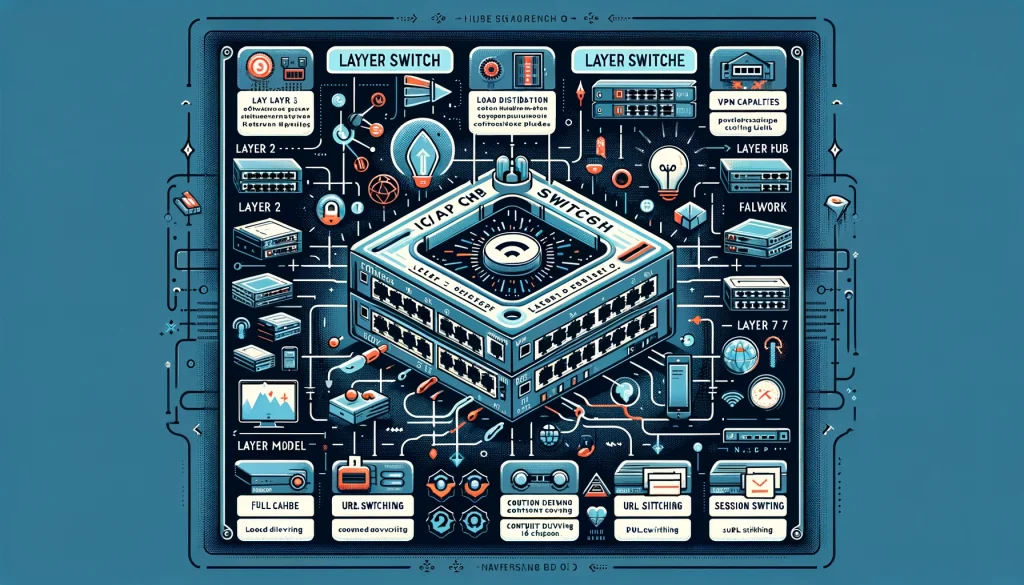In the expansive realm of computer networking, the spotlight often lands on a critical yet sometimes overlooked component: the network switch. Defined by Wikipedia as “a computer networking device that connects devices on a computer network, by using packet switching to receive, process, and forward data to the destination device,” network switches are the unsung heroes of our interconnected world.
Network switches primarily operate on two layers of the OSI model: Layer 2 (Data Link) and Layer 3 (Network). However, the versatility of switches extends beyond these layers, with specialized types operating at Layer 4 (Transport) and Layer 7 (Application), each adding a layer of functionality to cater to specific network needs.
Beyond Basic Connectivity: Layer 4 and Layer 7 Switches

Layer 4 switches, often involved in load balancing, come equipped with additional capabilities like firewalls and VPNs, providing connectivity, security, and efficiency. They prioritize network traffic based on application and importance, ensuring that critical data gets where it needs to go, swiftly and safely.
At the pinnacle of network switching, Layer 7 switches work with data from the application layer to make intelligent routing and forwarding decisions. These switches can be used for content delivery, caching, URL switching, and Session ID switching, showcasing their role in optimizing web and application delivery.
Choosing the Right Switch
The selection of a network switch depends heavily on the network’s requirements. For basic connectivity and Virtual LAN (VLAN) support, a Layer 2 switch suffices. Layer 3 switches or even Layer 4 switches might be the go-to solutions for networks requiring IP routing capabilities.
The Superiority of Switches Over Hubs
It’s clear that switches, with their ability to operate in full duplex mode—allowing simultaneous data transmission and reception—are a leap ahead of network hubs. By segmenting the network into isolated collision domains, switches enhance network reliability and performance, making them an essential component of any modern network architecture.
In conclusion, understanding the roles and capabilities of network switches across different OSI model layers is crucial for optimizing network performance and security. As the backbone of our digital connections, switches connect devices and ensure that data flows efficiently and securely across the network.






